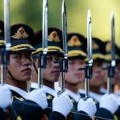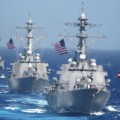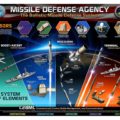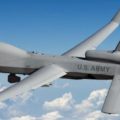Will The House of Representatives’ National Defense Authorization Act, (NDAA), passed last Friday, be sufficient to both address rising threats from abroad as well as make up the significant loss of funding during the Obama Administration? The $686.6 billion (which exceeds President Trump’s request of $603 billion; the Senate seeks to add another $14 billion) goes over the $549 billion limit established by the 2011 Budget Control Act by about $72 billion, so further work would have to be done for the House, Senate or Trump funding figures to be established.
Despite the unprecedented arms buildup and aggressive acts by Russia, China, Iran and North Korea, the Obama Administration chose to slash defense spending, and Congress, which had agreed to the sequester in response to the doubling of the national debt during the former president’s tenure, failed to respond.
America’s military is in a sharply deteriorated state. It had its last major upgrade during the Reagan Administration over three decades ago, and has been sharply reduced over the past 27 years. Its equipment has been worn down from repeated conflicts in the Middle East and Afghanistan; the same can be said for its personnel.
While all branches of the armed forces have been affected, the latest examples of damage have come the Navy and the Marines. Marine aviation has recently experienced a rise in “Class A Mishaps,” which are incidents that cause death or result in more than $2 million in aircraft damage.
In March, key military leaders testified before Congress about the crisis. They noted:
“Through 2009, the Department’s Strike Fighter force was relatively healthy. Several events transpired since 2009, however, which drove our current Strike Fighter inventory shortfall. The Budget Control Act of 2011 started multiple years of reduced military funding…Sequestration led to furlough and a hiring freeze of a skilled government civilian artisan workforce…significantly impacting…readiness along with other factors such as high utilization rates, lack of aircraft procurement and lack of spare parts…. In essence, consumption of aircraft exceeded new and re-work production capacity of aircraft causing an increasing shortfall…”
An unclassified study by the Mitre organization found that the “Navy’s budget is insufficient…to develop, procure, operate, and sustain all the forces needed…In addition, budget instability forces the Navy to make acquisition decisions that undermine affordability initiatives…for the last four years, the Navy has been operating under reduced top-lines and significant shortfalls. There will likely continue to be increasing pressure on the procurement accounts, which in turn threatens the near-term health of the defense industrial base.”
Testifying before the House Armed Services Committee, Adm. William F. Moran painted a dismal picture of a Navy that has been strained to the limit. Moran told committee members the ongoing demand for U.S. Naval forces far exceeds its long-term supply. And, he added, the Navy is the smallest it’s been in 99 years, making it urgent to “adequately fund, fix and maintain the fleet we do have.” The U.S. Navy has never been busier in a world of global threats, Admiral Moran said. While the Navy is getting the job done the unrelenting pace, inadequate resources and small size are taking their toll.
The House Armed Service Committee noted, following the vote, “Today, we have too many planes that cannot fly, too many ships that cannot sail, too many Soldiers who cannot deploy, while too many threats are gathering. We have come to a key decision point. For six years, we have been just getting by – cutting resources as the world becomes more dangerous, asking more and more of those who serve, and putting off the tough choices. The Chairman and members of the committee believe that we cannot keep piling missions on our service members without ensuring they have all they need to succeed.”
Frank Vernuccio serves as editor-in-chief of the New York Analysis of Policy & Government


















Follow Us